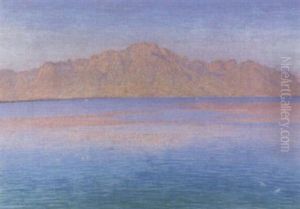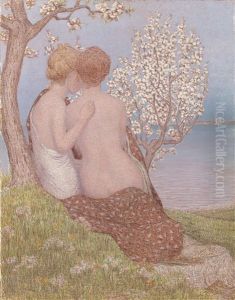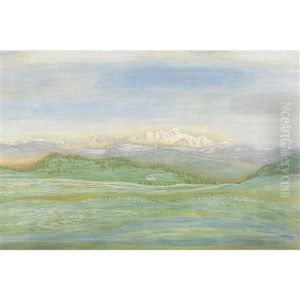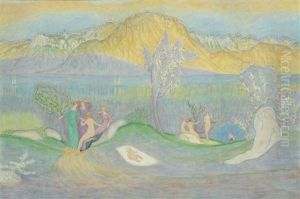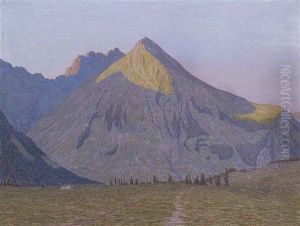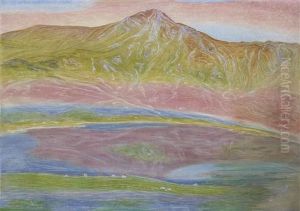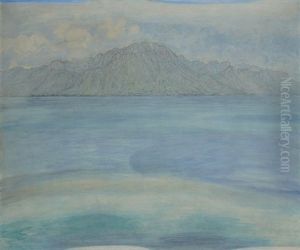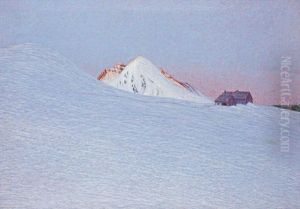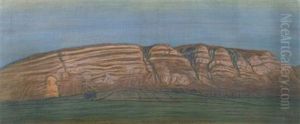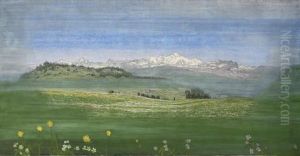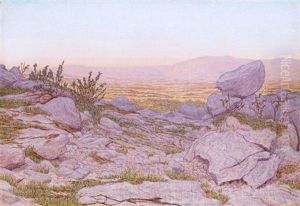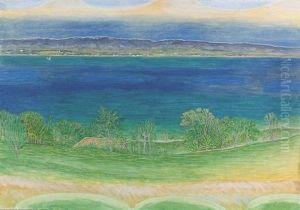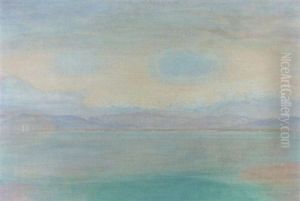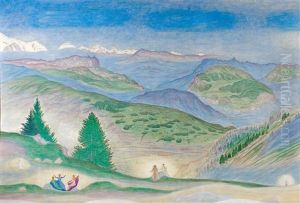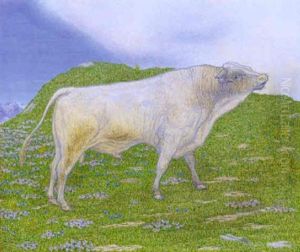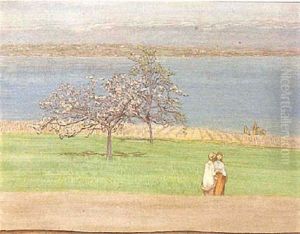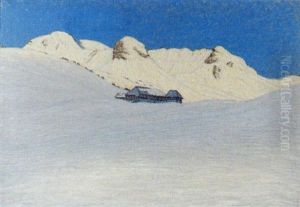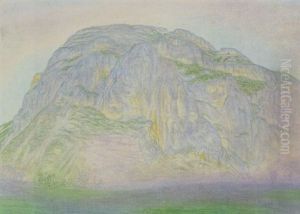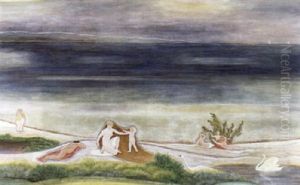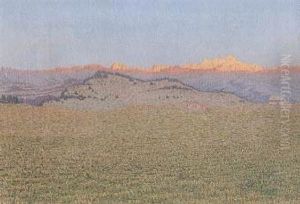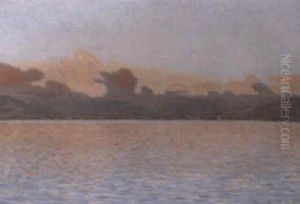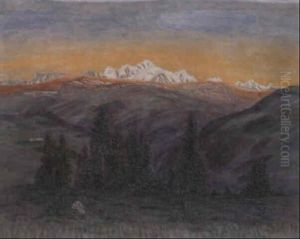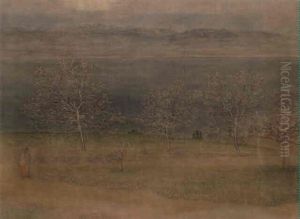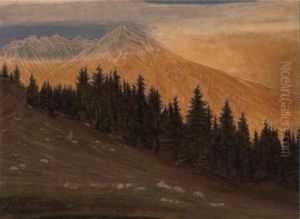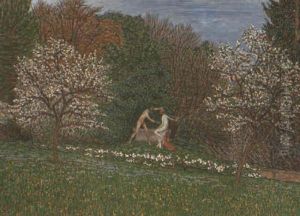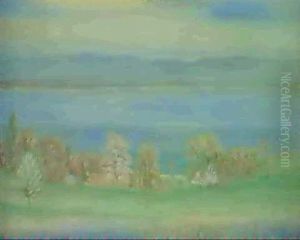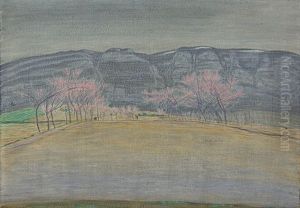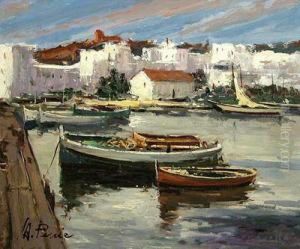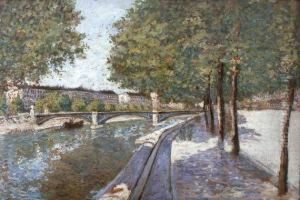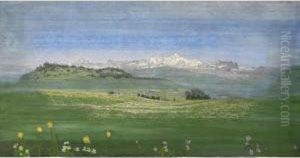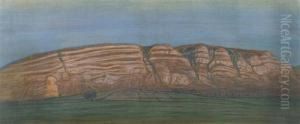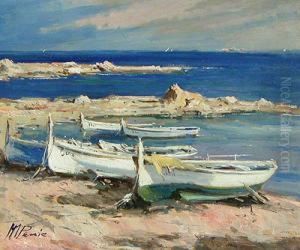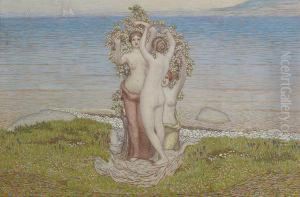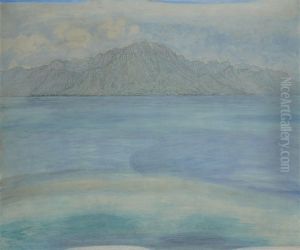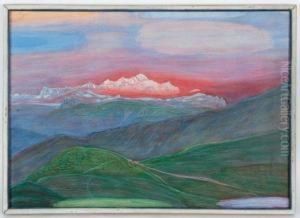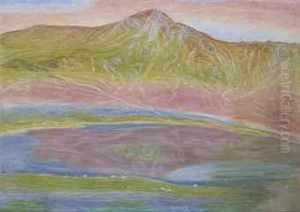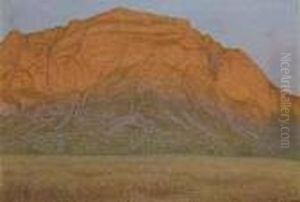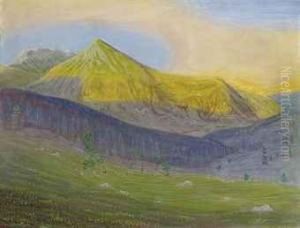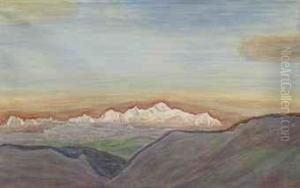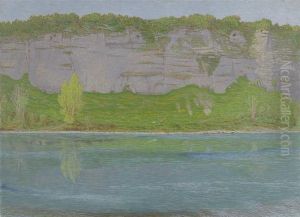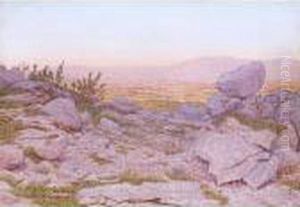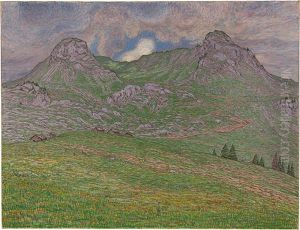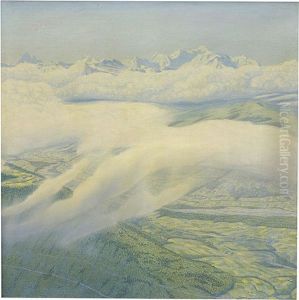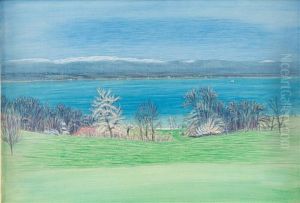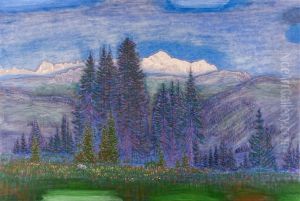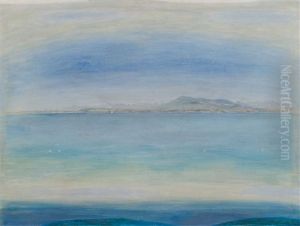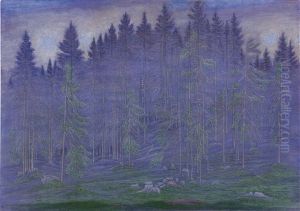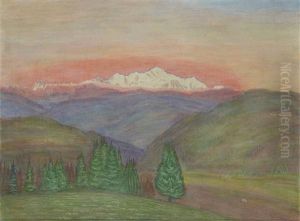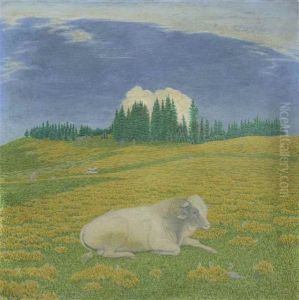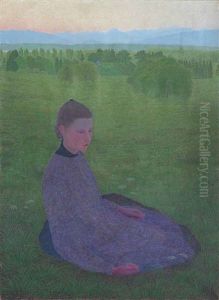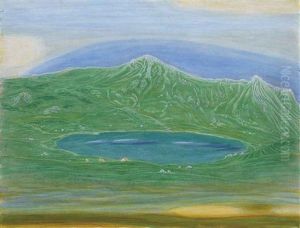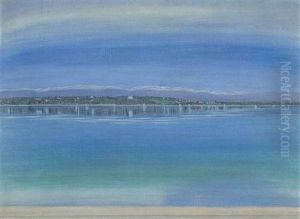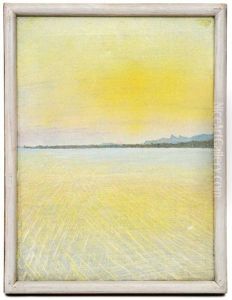Alexandre Perrier Paintings
Alexandre Perrier was a Swiss painter, known for his landscapes and still-life paintings that capture the essence of the Swiss countryside and the beauty of nature. Born on March 2, 1862, in Geneva, Switzerland, Perrier was part of a generation of artists who were moving away from the traditional academic styles and were exploring new approaches to painting. His work is often associated with post-impressionism, a movement that sought to bring a more emotional and symbolic representation to art, beyond the realistic depictions that had dominated the previous era.
Perrier's early education in art was influenced by his Swiss heritage, which is evident in his choice of subjects and the meticulous detail with which he approached landscape painting. He studied in Geneva before continuing his education in Paris, where he was exposed to the vibrant art scene and the emerging post-impressionist movement. This experience significantly shaped his artistic direction, and he began to experiment with light, color, and brushwork in ways that broke from traditional representations.
Throughout his career, Alexandre Perrier was committed to capturing the transient effects of light and atmosphere on the natural landscape. His paintings often feature the Swiss Alps, lakes, and rural scenes, rendered with a delicate touch and a keen eye for the intricate interplay of light and shadow. Perrier's work is characterized by its luminous colors, fluid brushstrokes, and the sense of tranquility and harmony it evokes.
Despite his affinity for landscapes, Perrier also excelled in still-life painting, where he applied the same principles of light and color to animate objects with a vivid sense of presence and texture. His still-life works are celebrated for their precision and the subtle interplay of light, which adds depth and realism to the compositions.
Alexandre Perrier's contribution to Swiss art and post-impressionism is significant. Throughout his life, he exhibited widely, both in Switzerland and abroad, gaining recognition for his distinctive style and his ability to capture the essence of the natural world. He passed away on October 3, 1936, leaving behind a legacy that continues to inspire and influence artists and art lovers alike. His works are preserved in museums and private collections around the world, where they continue to be admired for their beauty and technical mastery.
